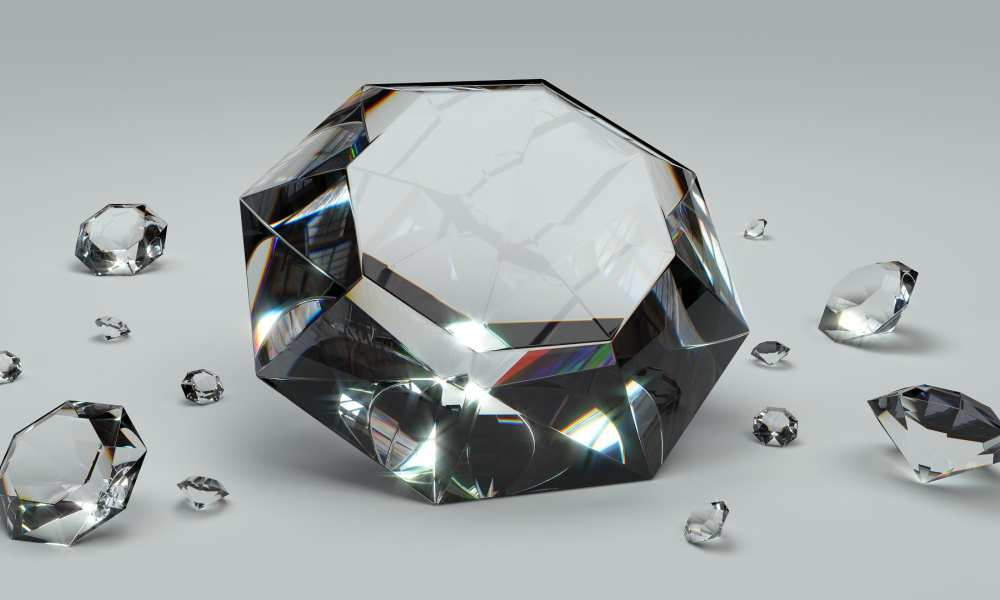Diamonds are rare, beautiful, expensive. They are "girls' best friends" and (not only) boys' good investment. Here is the overview of what should we know about diamonds to make a right choice whatever our purpose is. Part one briefly describes the diamonds.
Gabriel Levin-Cafrir (M.Soc.Sci), second generation diamantaire, graduate of the Center of Gemological Studies under the leadership of one of the leading Graduate Gemologists of Israel - Eli Dori, specialization - Diamond Expert (“Diamond Grading & Evaluating” diploma), at Diamond Exchange, Ramat Gan, Israel. The evaluation of diamonds is based on the G.I.A (Gemological Institute of America) standards. Practiced in Israeli commpany “Keren Or”. Works in jewellery and gemstones sales sphere (family business), consults, does lecturing.
Briefly about Diamonds
Diamonds. There is so much hidden in this word. Some people can’t imagine their lives without them, some think, that they are as precious as a piece of glass. Some will commit a crime to get them, but some won’t even pick them up from the ground. But the question is, do we really know whatdiamond is? How much we know about them? Do we understand the true value of diamonds? In this article we will cover this intriguing topic.
Internet contains a lot of detailed information about diamonds (blogs, articles, lectures etc.), every online jewelry shop consider their duty to have at least several paragraphs about this precious stone.That’s why I won’t go into long stories about diamonds. I will briefly cover most interesting, not so well known by customers and necessary common things from my point of view that would be useful to know. Let’sstart!
Diamond description
Interesting that diamond (also as graphite) is composed almost entirely of a single element - carbon. Typically, about 99.95% is carbon and ~0.05% are trace elements - atoms that aren’t part of the diamond’s essential chemistry (some influence its color, some - crystal shape). It forms at depth of approximate 100-250 km below the surface of the Earth (very close to Earth’s shell) under conditions of high temperature of 900 to 1,500 C° and high pressure of 45 to 60 kilobars (as Prof. Stephen Haggerty compared it to 4’000 grown men standing on your foot at a time). And what about graphite, you may ask? Graphite crystalizes at lower temperatures and pressures in the Earth’s crust, as a result crystal structure differs from a diamond. We can write with graphite, and diamond is the hardest material in nature.
Diamond sources
There are two “traditional” sources of diamonds (by “traditional” I mean “natural”) and one artificial. Traditional sources are:
- Deep earth, where they were formed and brought by kimberlite and lamproite magma.
- Diamond containing meteorites that went through our atmosphere and fell on Earth.
The artificial source comes from laboratorieswhere diamonds are grown using two main methods: HPHT and CVD. Moredetailed information about laboratory-grown diamonds you will find in the next article.
Diamond value
Why do diamonds cost so much? Well, the reason is simple - rarity. If we are talking about mining, there are several problems that we have to deal with.
The first problem - diamond mines are often located in remote and unpleasant (for human life) areas, like the frozen terrain of Siberia or challenging regions in Africa.
The second problem - diamond mining is very expensive because of the tremendous volume of ore that must be removed and then processed (crushed and washed) to recover them.Workers often must process about a ton of rock to recover a piece of gem rough weighing half a carat, which at best case might produce a faceted diamond half that size. You can imagine the costs.
The third problem – quality (colour and clarity) and size (weight) of the found diamonds (the heavier, cleaner and better colour, the more expensive diamond will be.For comparison, about 100,000 tons of kimberlite or secondary material may have to be processed to produce a single piece of rough from which a 1 ct D Flawless diamond can be cut). Most diamonds that are found are “industrial” – low-quality diamonds that can’t be used in jewellery sphere, but are used as parts for creating special equipment for different spheres like medicine, space etc.
To sum up, I believe it’s human nature to value things that are rare and hard to get, like strongfriendship or true love. And it seems to me that these things are worthy to be valued so much, don’t you think?

